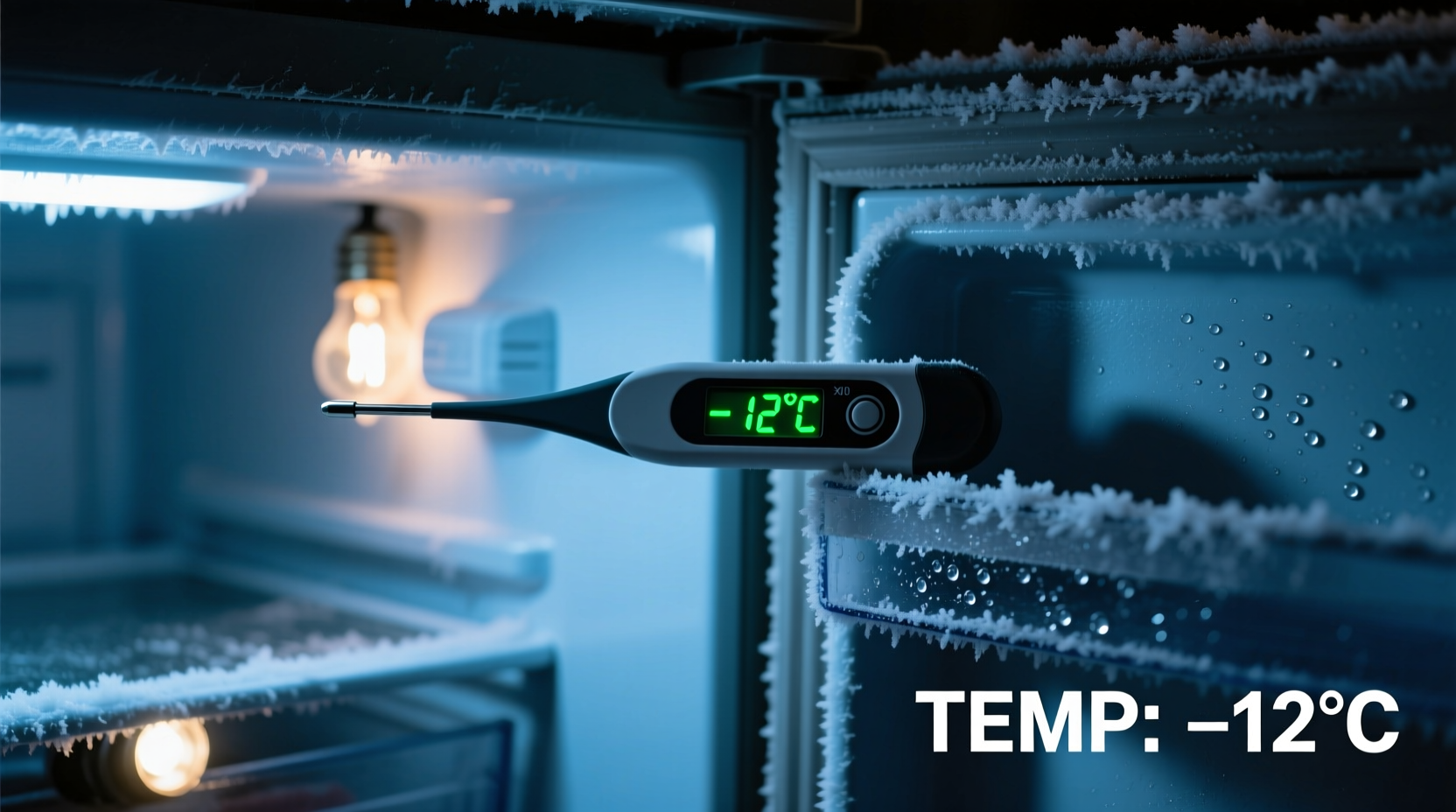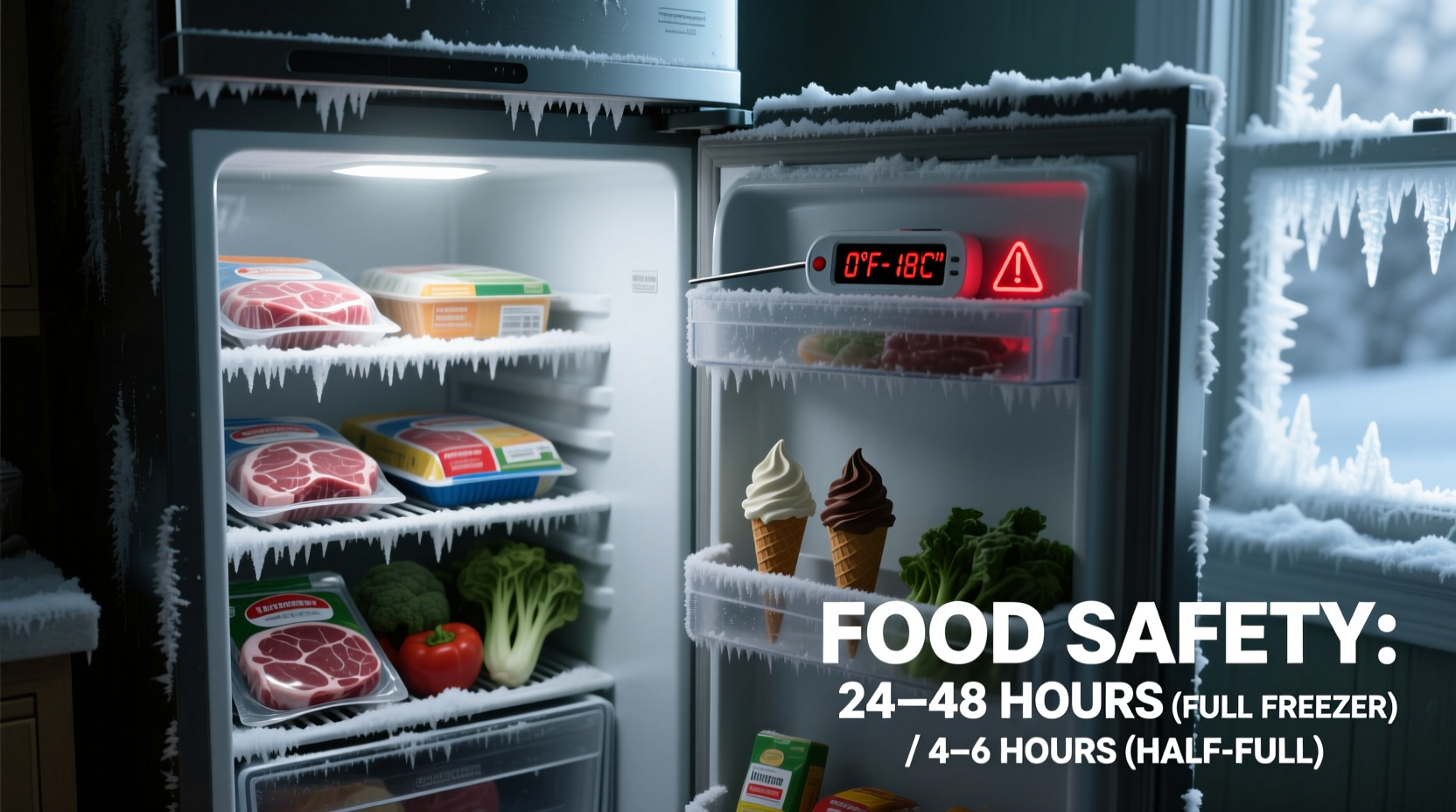The Science Behind Frozen Food Safety During Power Outages
When the power goes out, your freezer becomes a temporary food preservation system relying on insulation and existing cold temperatures. Understanding the science helps you make informed decisions. The critical factor is maintaining temperatures at or below 40°F (4°C) - the threshold where bacteria begin multiplying rapidly.
According to the USDA Food Safety and Inspection Service, frozen food remains safe as long as it contains ice crystals or stays at 40°F or below. The danger zone for food safety begins at 40°F and extends to 140°F, where harmful bacteria can double in number every 20 minutes.

Four Critical Factors That Determine Food Safety Duration
Several variables significantly impact how long your food stays safe during a power outage. Understanding these helps you assess your specific situation accurately.
Freezer Capacity and Organization
A full freezer maintains cold temperatures nearly twice as long as a partially filled one. When freezers are packed tightly, the frozen items act as 'cold batteries' that help maintain the overall temperature. The USDA recommends keeping your freezer at least 75% full for optimal emergency performance.
Freezer Type Matters
Chest freezers typically preserve food longer than upright models during power outages. This difference comes down to basic physics - cold air sinks, so when you open a chest freezer, the cold air remains inside. Upright freezers lose cold air more quickly each time the door opens. On average, chest freezers maintain safe temperatures 25-30% longer than upright models during outages.
Ambient Temperature Impact
The room temperature where your freezer is located dramatically affects how quickly it warms. During summer months or in warmer climates, your freezer will reach dangerous temperatures much faster. A freezer in a 90°F garage may only maintain safety for half as long as one in a 65°F basement.
Door Opening Frequency
Every time you open the freezer door, you're letting warm air in and cold air out. Research from the National Center for Home Food Preservation shows that each 30-second door opening can increase the internal temperature by 5-10°F. During extended outages, minimize door openings to preserve cold air.
Practical Action Plan: What to Do When the Power Goes Out
Follow this step-by-step guide to maximize food safety during power outages:
Immediate Actions (First 1-2 Hours)
- Keep freezer doors closed - this is your most important action
- Place dry ice or ice packs around critical items if available
- Consider moving critical items to a cooler with ice if outage appears prolonged
- Place appliance thermometers in both refrigerator and freezer
Monitoring Phase (Ongoing)
- Check temperatures only when absolutely necessary (once every 12-24 hours)
- Look for ice crystals in food as a safety indicator
- Group similar food items together to maintain consistent temperatures
- Use frozen water bottles as both cooling sources and drinking water
Decision Time (When Power Restores)
- Check appliance thermometer readings first
- Discard any food that has been above 40°F for more than 2 hours
- When in doubt, throw it out - don't risk foodborne illness
- Thawed food with ice crystals may be safely refrozen or cooked
| Food Type | Safe Duration (Full Freezer) | Warning Signs of Spoilage | Can Be Refrozen? |
|---|---|---|---|
| Raw meats (beef, pork, lamb) | 48 hours | Unpleasant odor, slimy texture | Only if ice crystals remain |
| Poultry and seafood | 24-36 hours | Fishy odor, sticky surface | No if completely thawed |
| Prepared meals | 36-48 hours | Unusual color, mold | Only if partially frozen |
| Baked goods | 72+ hours | Dry texture, freezer burn | Yes, quality may decline |
| Fruits and vegetables | 48 hours | Mushy texture, off-colors | Only if ice crystals present |
Preparing for Future Power Outages
Smart preparation can significantly extend your food's safety window during unexpected outages:
Essential Emergency Supplies
- Digital appliance thermometer ($10-15 investment)
- Pre-frozen water bottles (cooling source + drinking water)
- Insulated coolers for critical items
- Dry ice (25 pounds keeps 10 cubic feet frozen for 3-4 days)
Strategic Freezer Organization
Arrange your freezer for maximum emergency efficiency:
- Place frequently used items near the front
- Group similar food types together
- Keep a written inventory on the freezer door
- Designate a 'priority zone' for high-value or hard-to-replace items
- Store items in flat, rectangular containers that pack tightly
Long-Term Preparation Strategies
According to the FDA Food Code, households that regularly prepare for power outages waste 30% less food during emergencies. Implement these strategies:
- Keep your freezer at least 75% full at all times
- Consider investing in a chest freezer for emergency storage
- Learn which foods freeze well and which don't
- Rotate stock using the 'first in, first out' method
- Keep a supply of dry ice contacts for emergencies
Common Misconceptions About Frozen Food Safety
Several widespread myths could put your health at risk during power outages:
- Myth: If food still feels cold, it's safe to eat Fact: Food can feel cold while still being in the danger zone (40-140°F)
- Myth: Freezer burn indicates food is unsafe Fact: Freezer burn affects quality but not safety - trim affected areas before cooking
- Myth: All thawed food must be discarded immediately Fact: Food with remaining ice crystals can often be safely cooked or refrozen
- Myth: The 'sniff test' reliably determines food safety Fact: Harmful bacteria don't always produce noticeable odors - rely on temperature, not smell
When to Discard Food: Clear Guidelines
Use these definitive criteria to make safe decisions about your food:
- Discard any food that has been above 40°F for more than 2 hours (1 hour if room temperature exceeds 90°F)
- Throw out perishable items (meat, poultry, seafood, dairy) that have reached room temperature
- Discard food with unusual odors, colors, or textures - when in doubt, throw it out
- Never taste food to determine safety - harmful bacteria aren't always detectable by taste
Remember that some foods have longer safety windows than others. According to research from the University of Minnesota Extension, hard cheeses, butter, and baked goods typically remain safe longer than meats and dairy products during temperature fluctuations.











 浙公网安备
33010002000092号
浙公网安备
33010002000092号 浙B2-20120091-4
浙B2-20120091-4